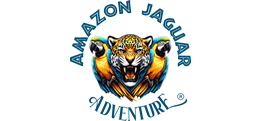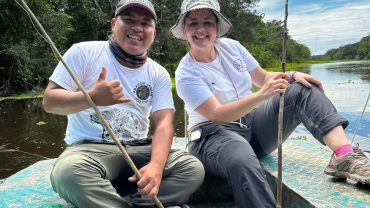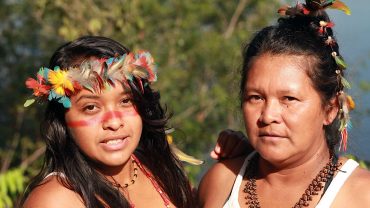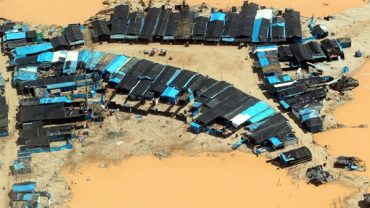The Red Uakari (Cacajao calvus ucayalii)
The red uakari (Cacajao calvus ucayalii), also known as the bald uakari, is a primate native to the Amazon rainforest, characterized by its distinctive appearance: a hairless, bright red face, a short tail, and a reddish coat. This highly specialized species has a limited geographical distribution, with the largest known populations concentrated near the mouth of the Yavarí Mirín River, along the Peru-Brazil border. The striking red coloration of its face is an indicator of good health, reflecting a balanced diet composed of seeds, fruits, flowers, and insects. These primates live in family groups, though males often leave to establish new social units. The red uakari prefers palm-rich habitats, particularly those with abundant Mauritia flexuosa (aguaje) palms, which provide a significant portion of their diet.
Conservation and Research Efforts
The red uakari serves as the flagship species of the Lago Preto Paredón Conservation Concession, where research has been conducted since a team from the Wildlife Conservation Society (WCS) first explored the area in 1992. As with many other primates, the species is highly vulnerable to excessive hunting, and its populations decline rapidly when subjected to unsustainable exploitation. Fortunately, conservation initiatives led by WCS and the Durrell Institute of Conservation and Ecology (DICE), including habitat management, population monitoring, and ecological studies, have contributed to the successful stabilization of the red uakari population in the Lago Preto Paredón area. By 2011, the population was officially recognized as stable.
Conservation Status and Threats
The red uakari is the only primate in the Yavarí Valley listed as Vulnerable (VU) by the International Union for Conservation of Nature (IUCN). The Ministry of Agriculture and Irrigation of Peru has also classified the species as vulnerable due to habitat degradation and excessive hunting. Research supported by WCS has focused on various aspects of the species’ ecology, social behavior, functional biology—particularly its distinctive red facial pigmentation—and population genetics. Understanding these ecological and biological factors is critical for the species’ conservation and for maintaining the health of its ecosystem.
Key Facts About the Red Uakari
- Its defining features include a bald head and a hairless, bright red face.
- Adult individuals weigh between 2.75 and 3.45 kg; males have an average head-body length of 45.6 cm, while females average 44 cm.
- The species has a short tail, averaging only 15 cm, less than half of its body length.
- It possesses well-developed canines, which facilitate the opening of thick fruit shells.
- Its distribution within the Amazon Basin is irregular, primarily occurring between the Yavarí and Ucayali Rivers.
- It predominantly inhabits areas rich in aguaje palms (Mauritia flexuosa).
- At night, individuals gather in large social groups ranging from 50 to 200 members.
- The species has a lifespan of up to 20 years.
- Mating occurs between October and May, with females attracting males through olfactory signals.
- Females give birth once every two years.
The red uakari is an ecologically significant species whose survival depends on continued conservation efforts. Protecting its habitat and mitigating human-induced threats are essential to ensuring its long-term viability within the Amazon rainforest.





Comment (0)